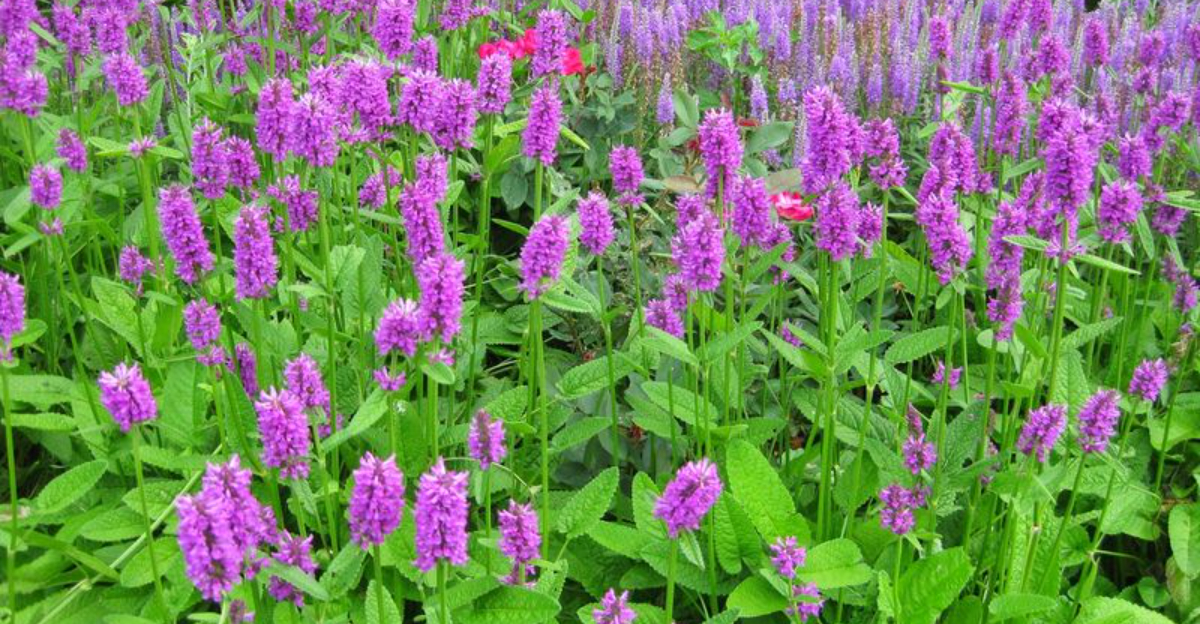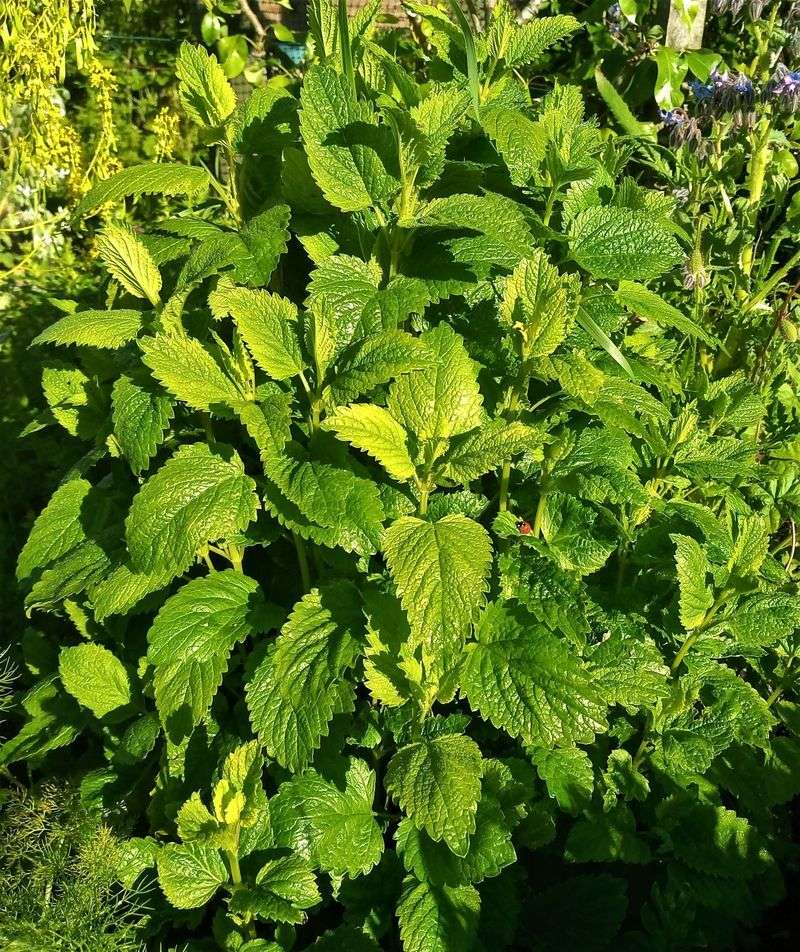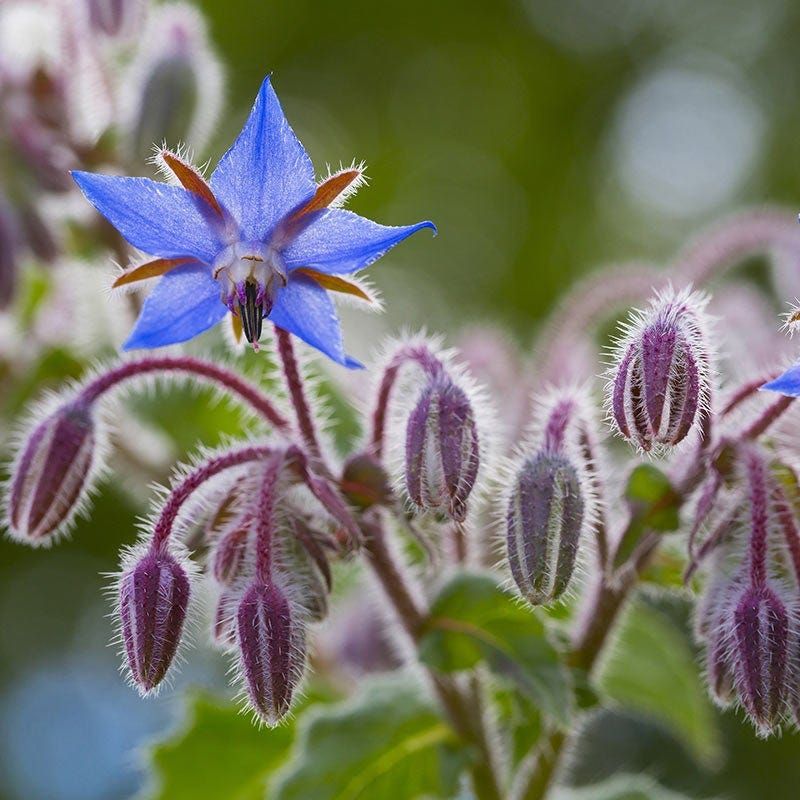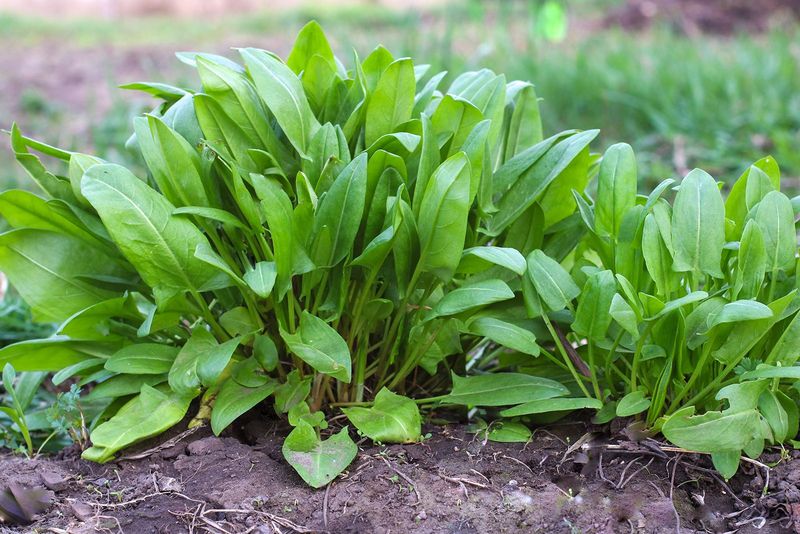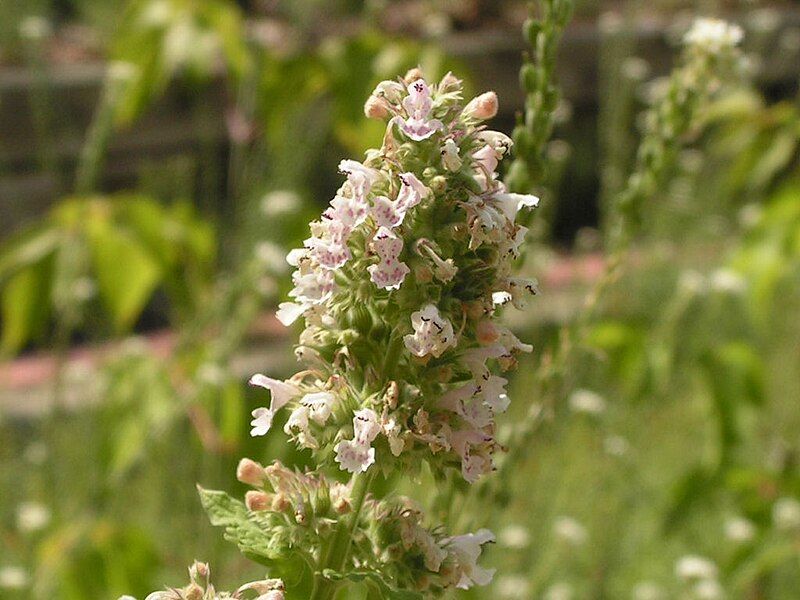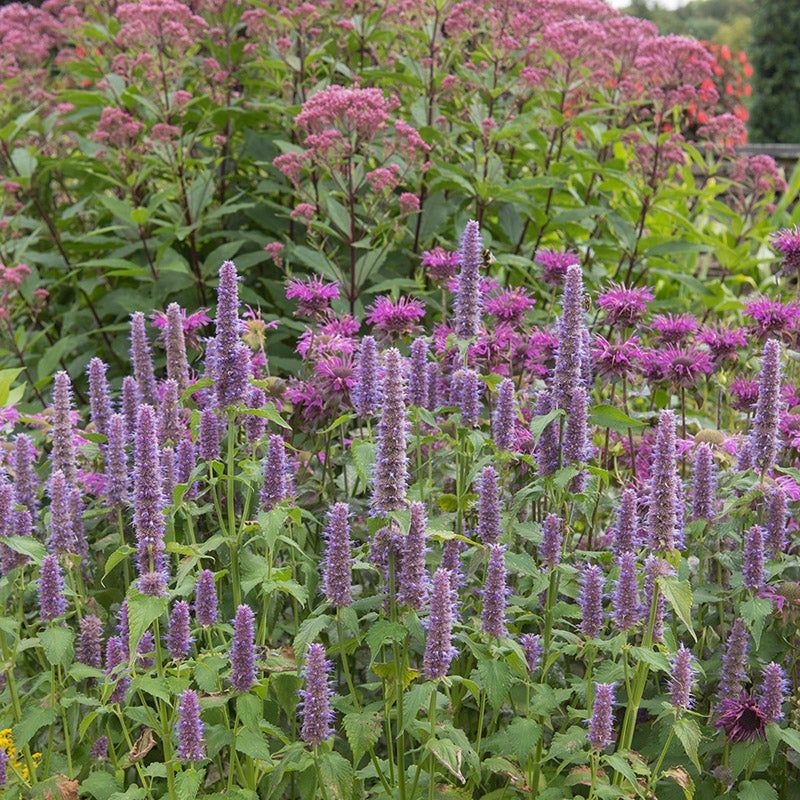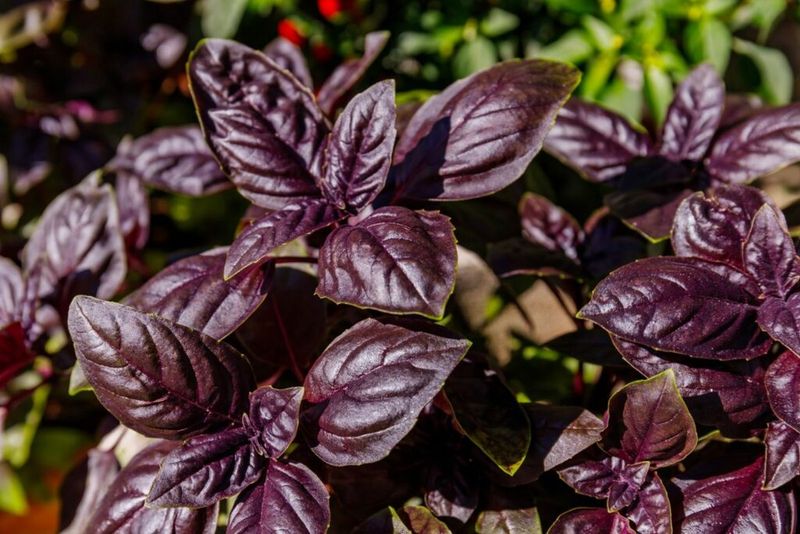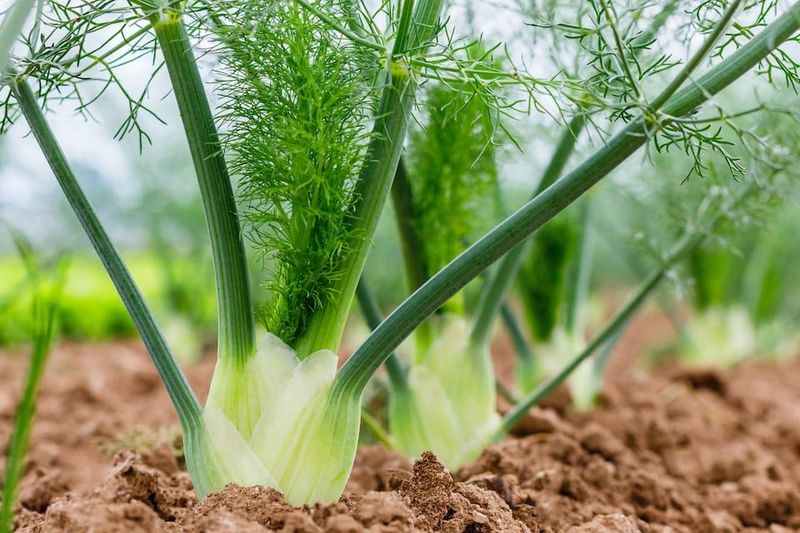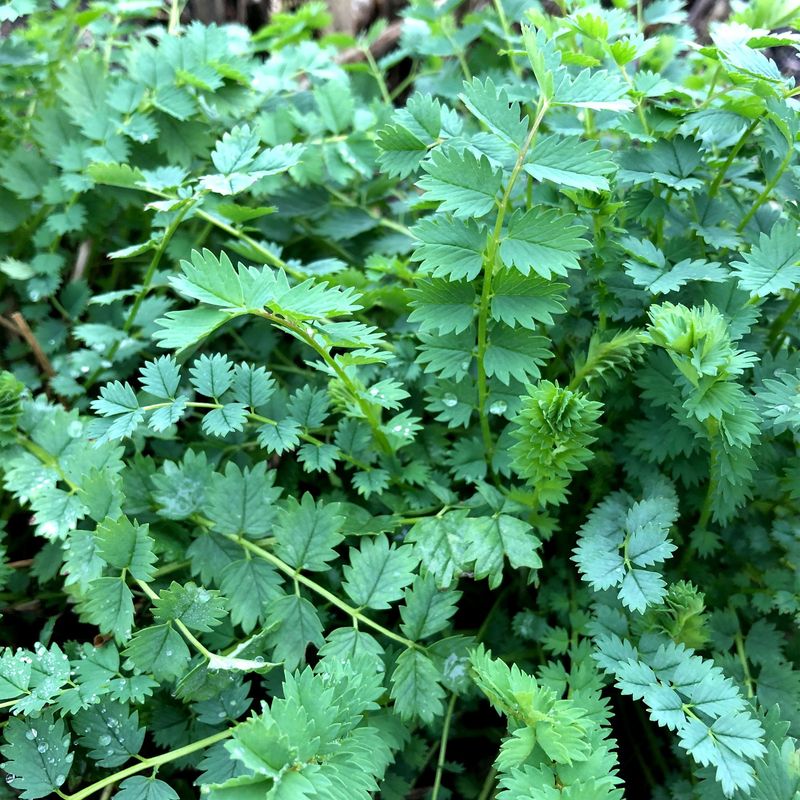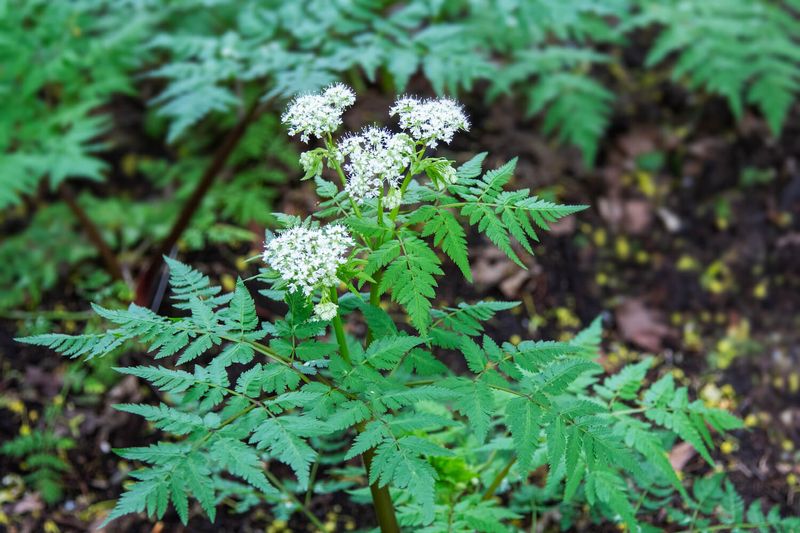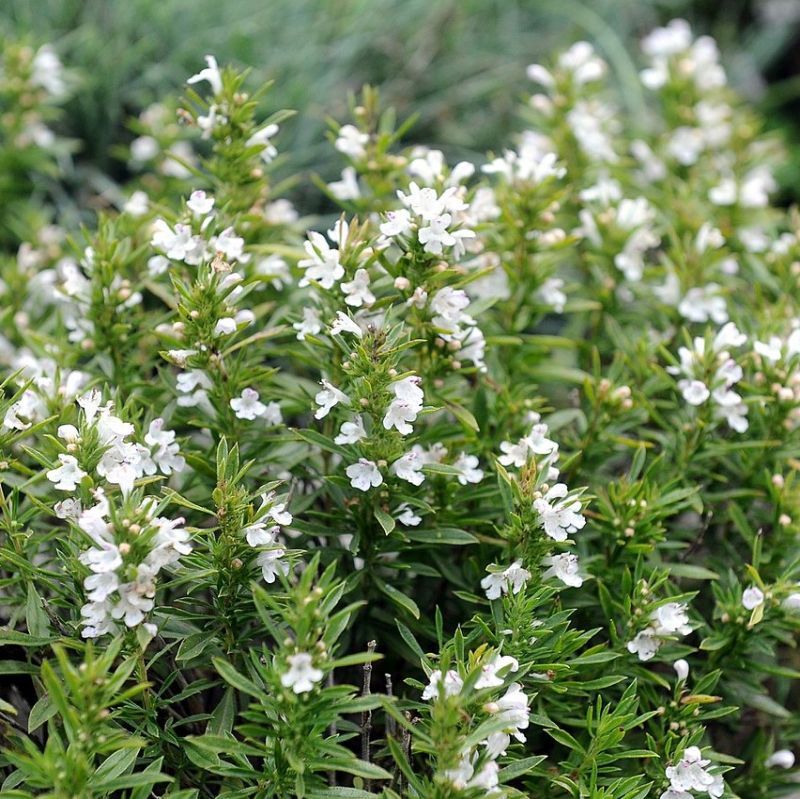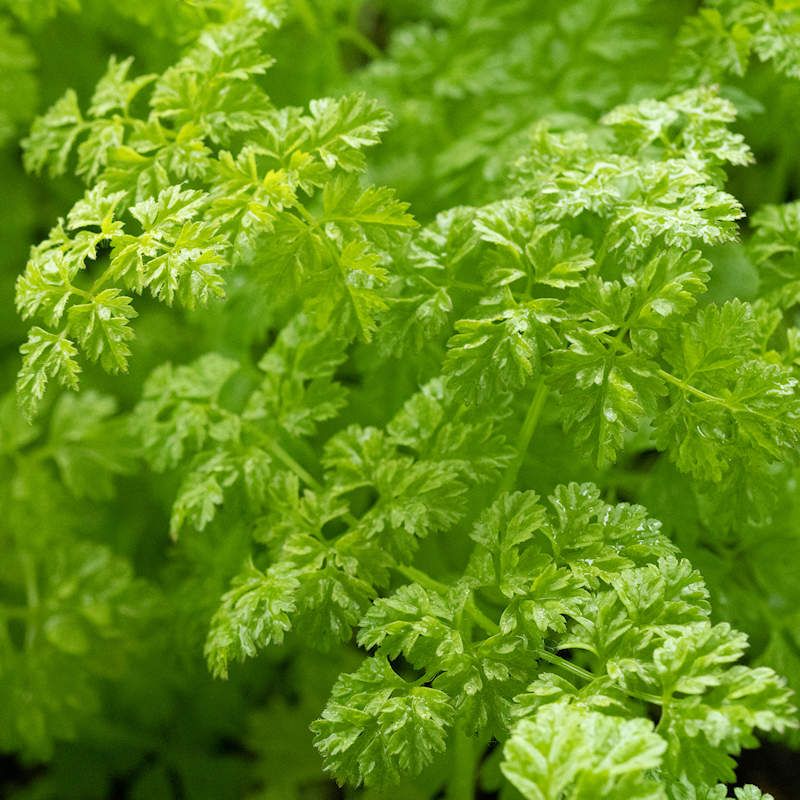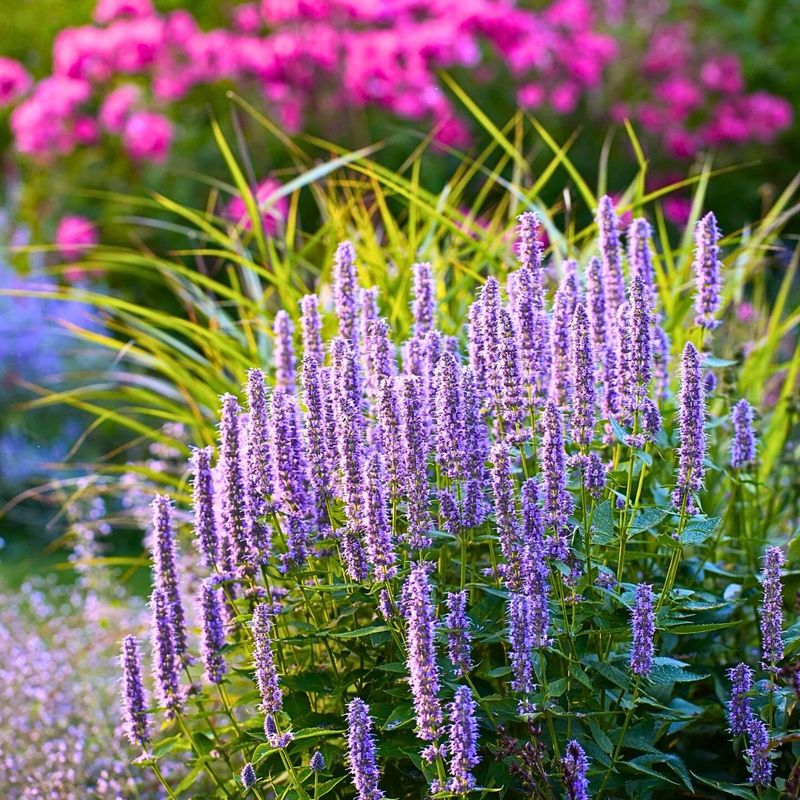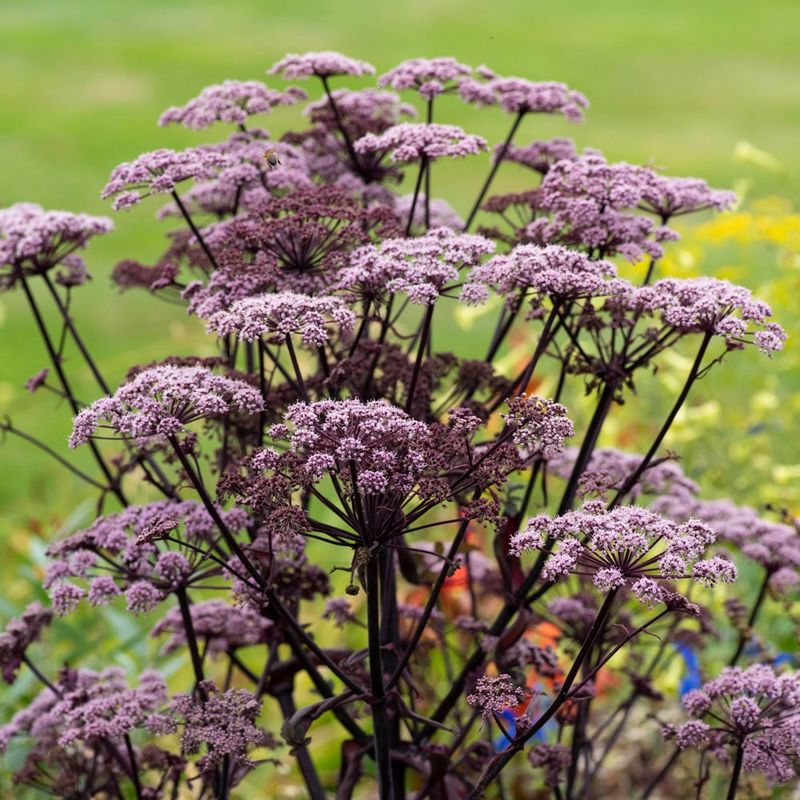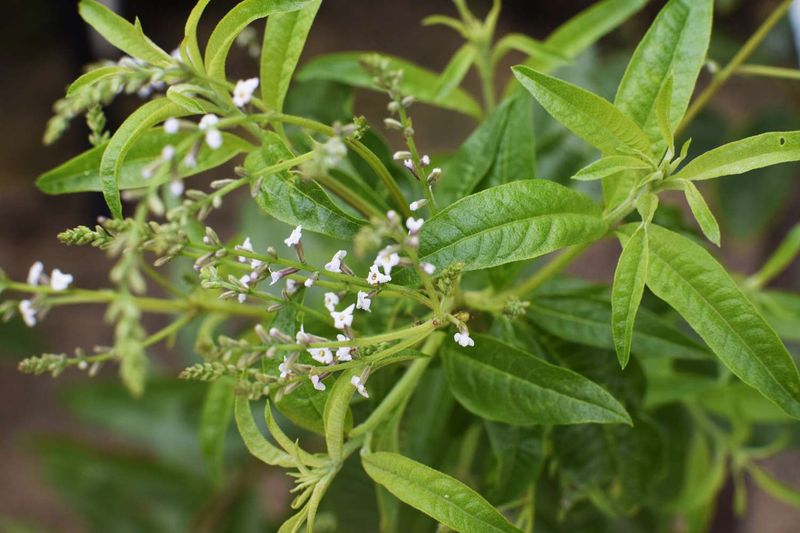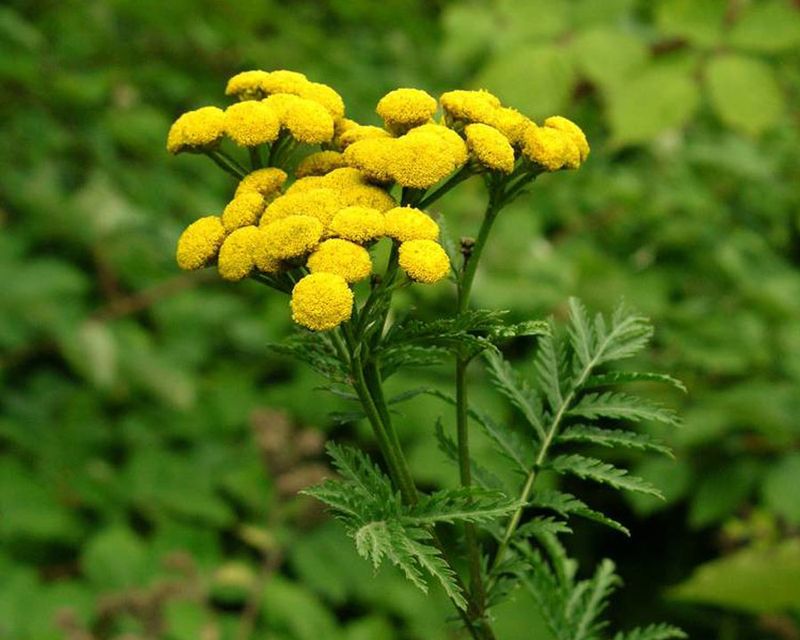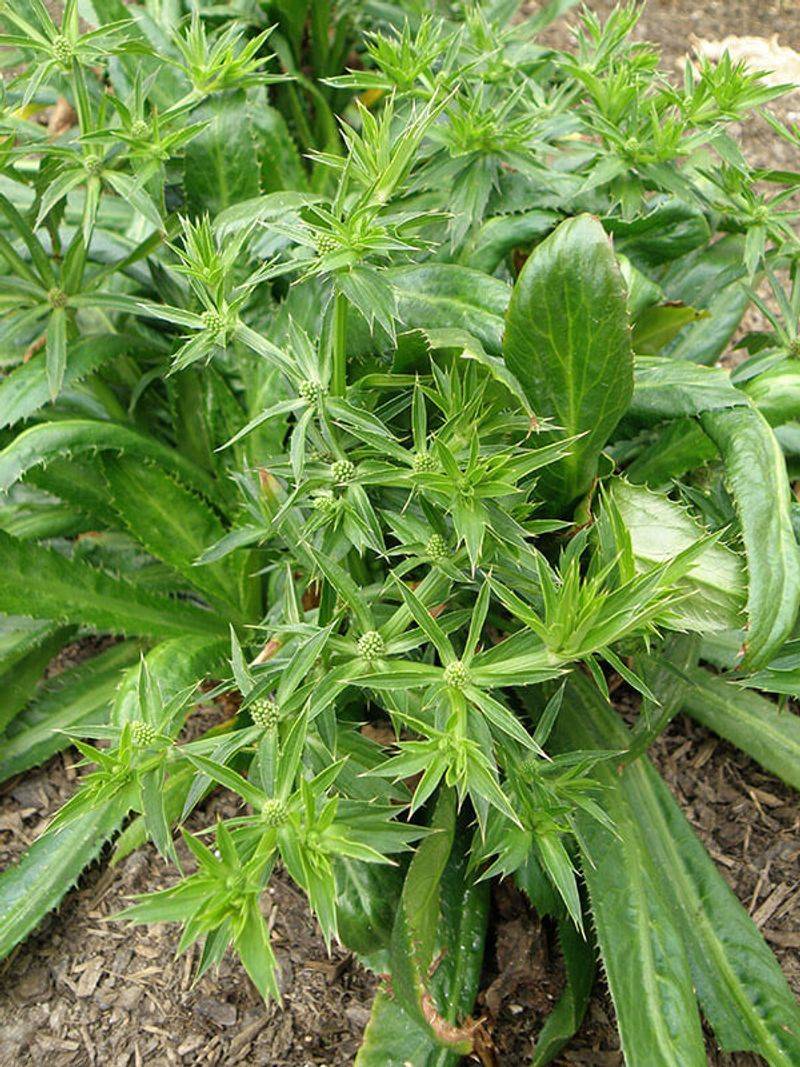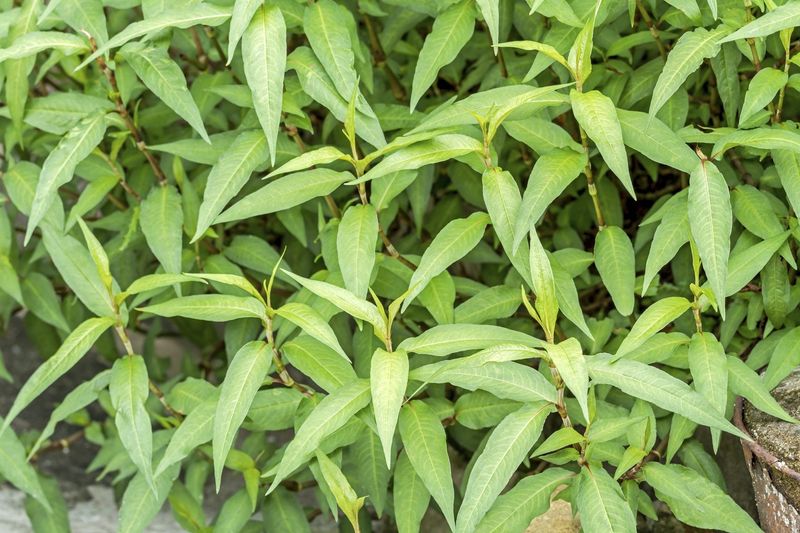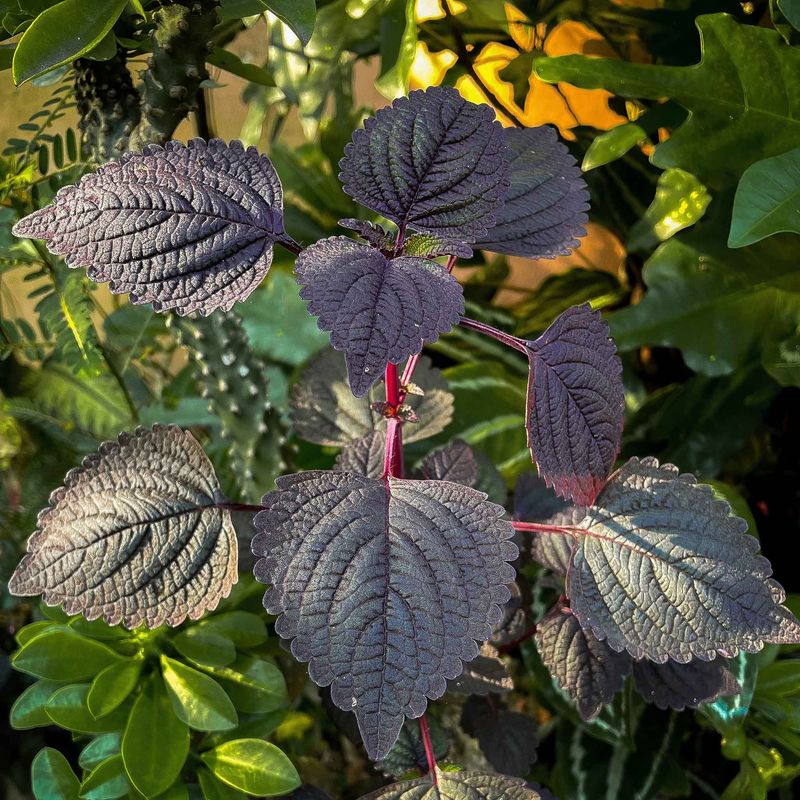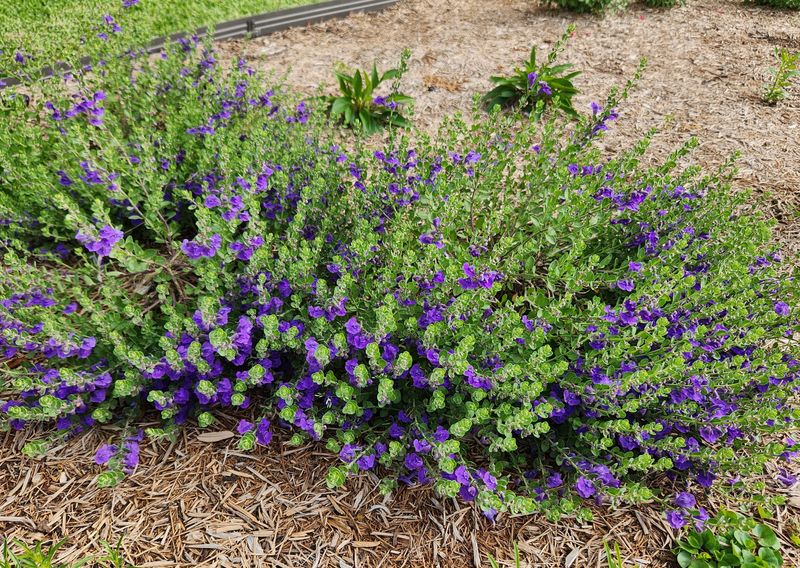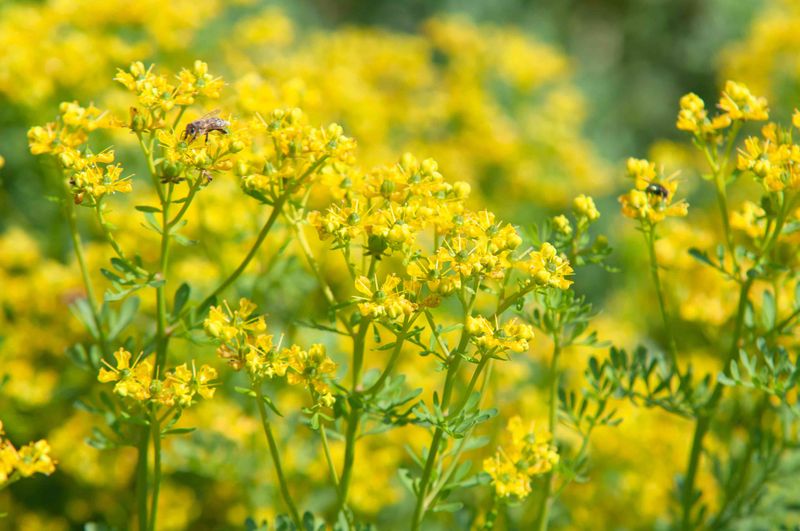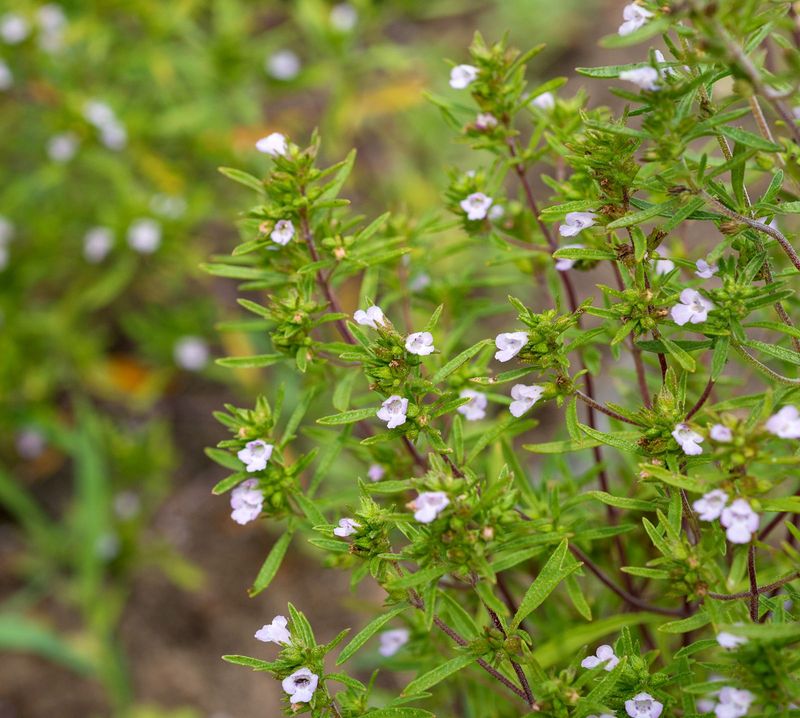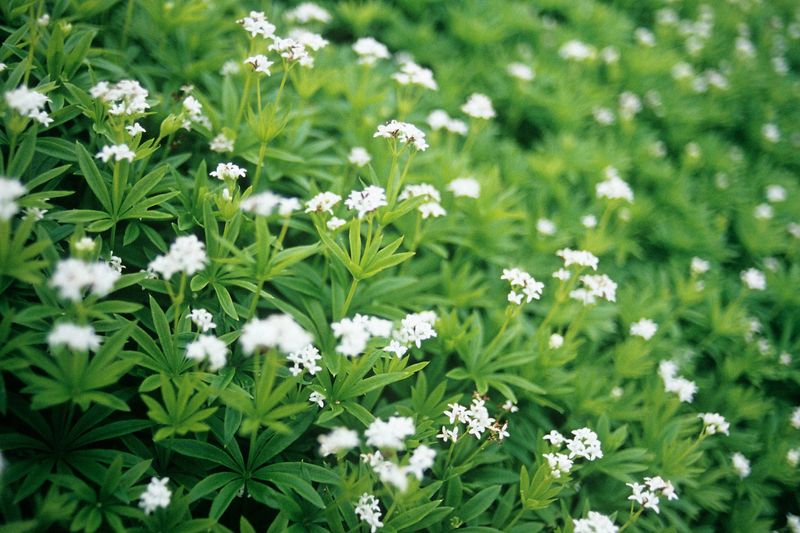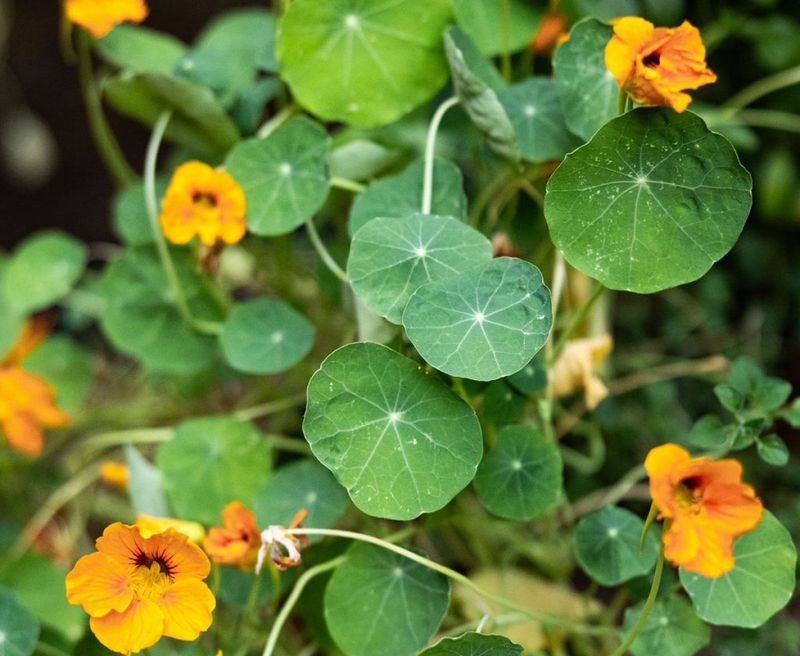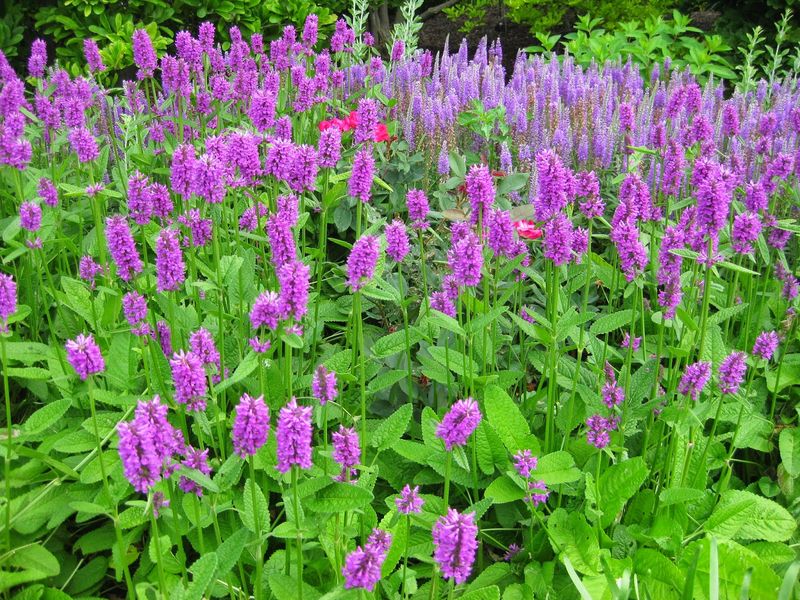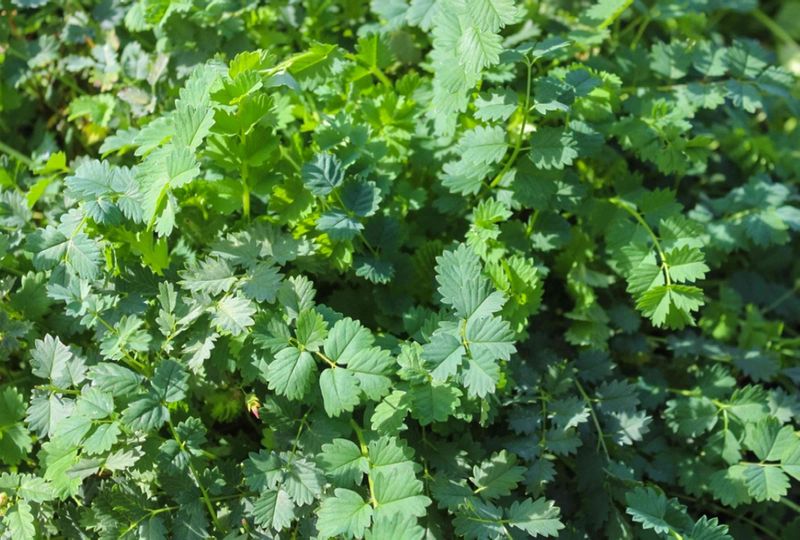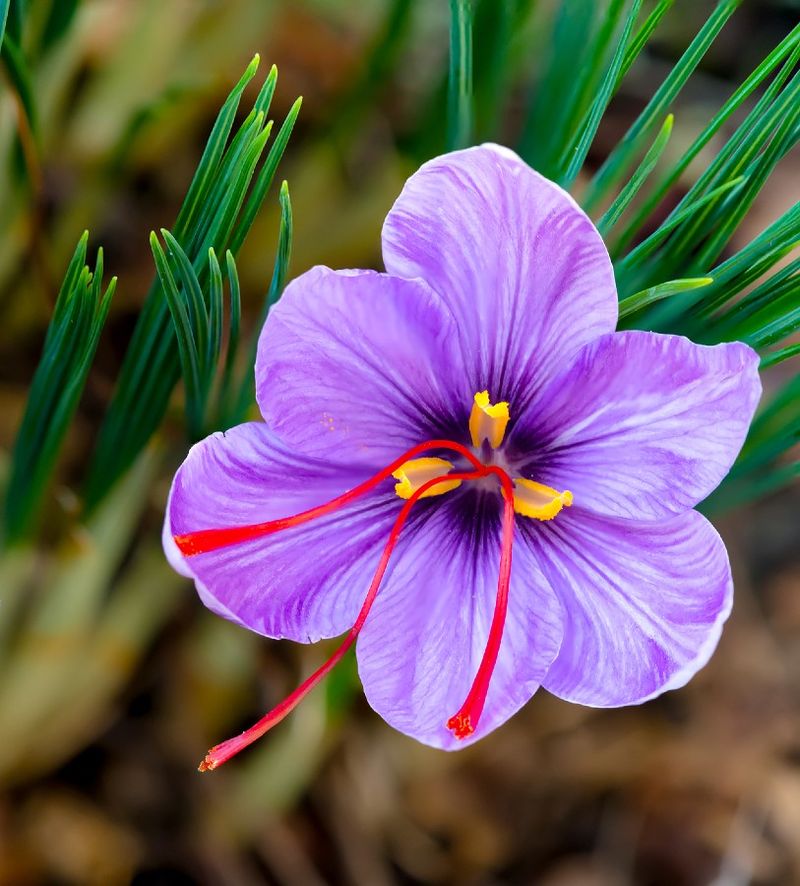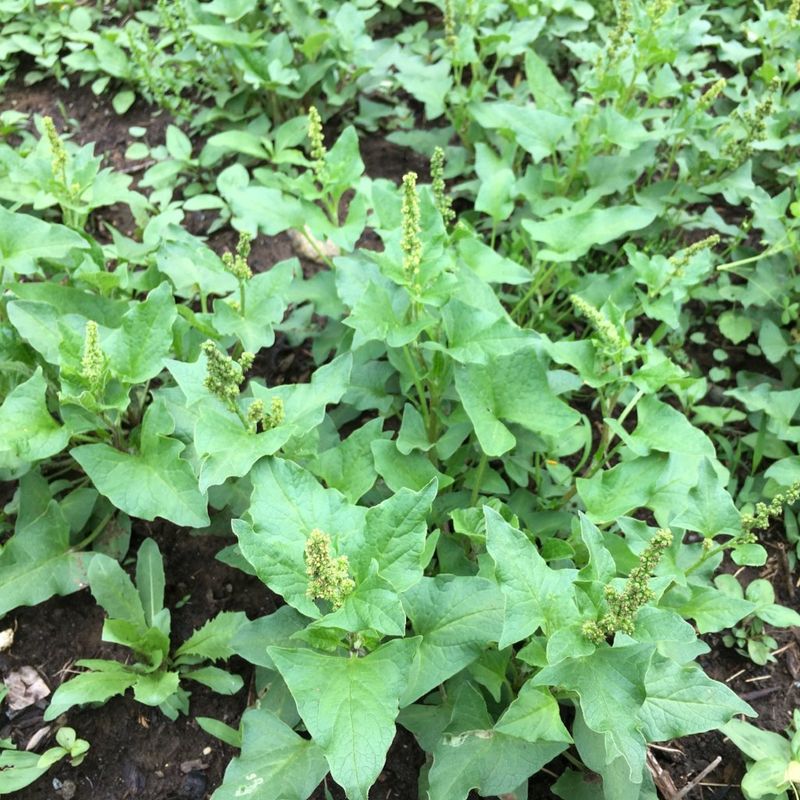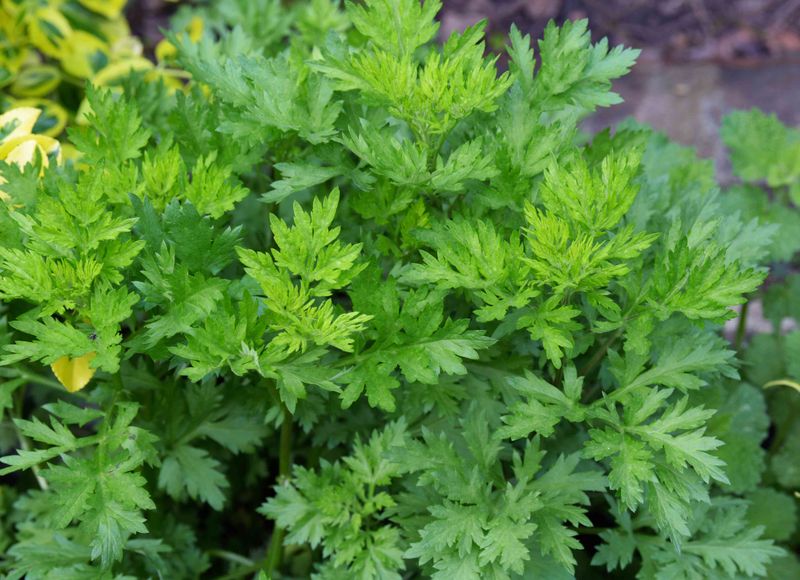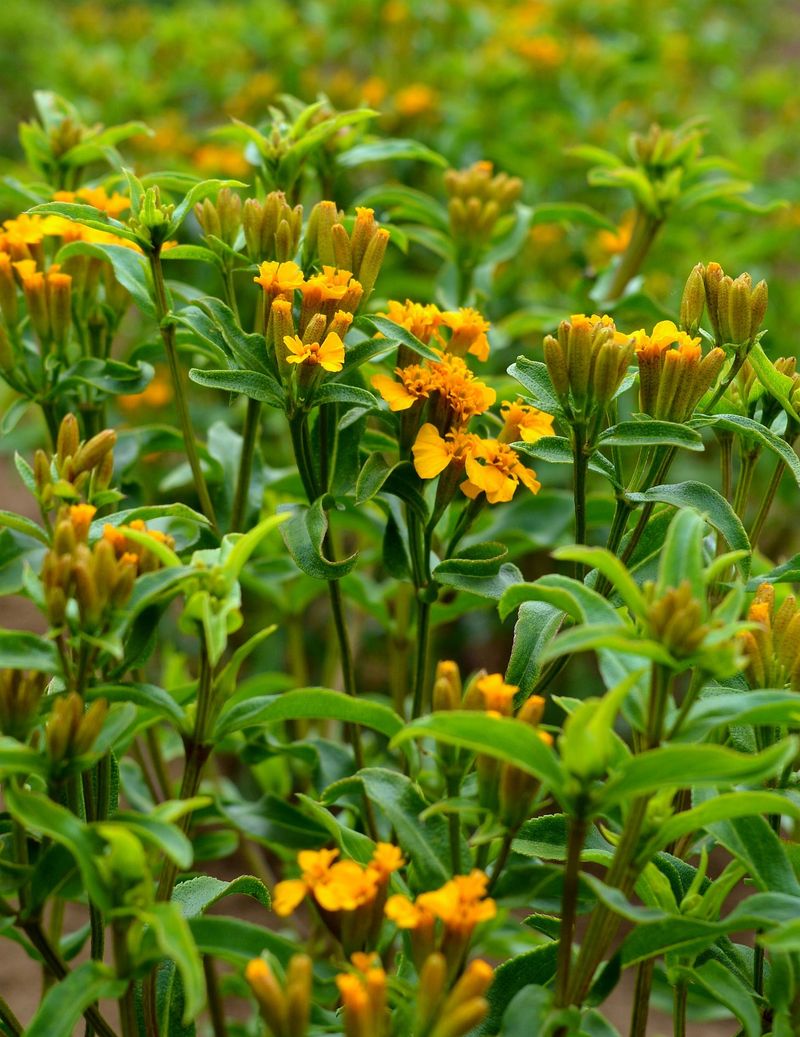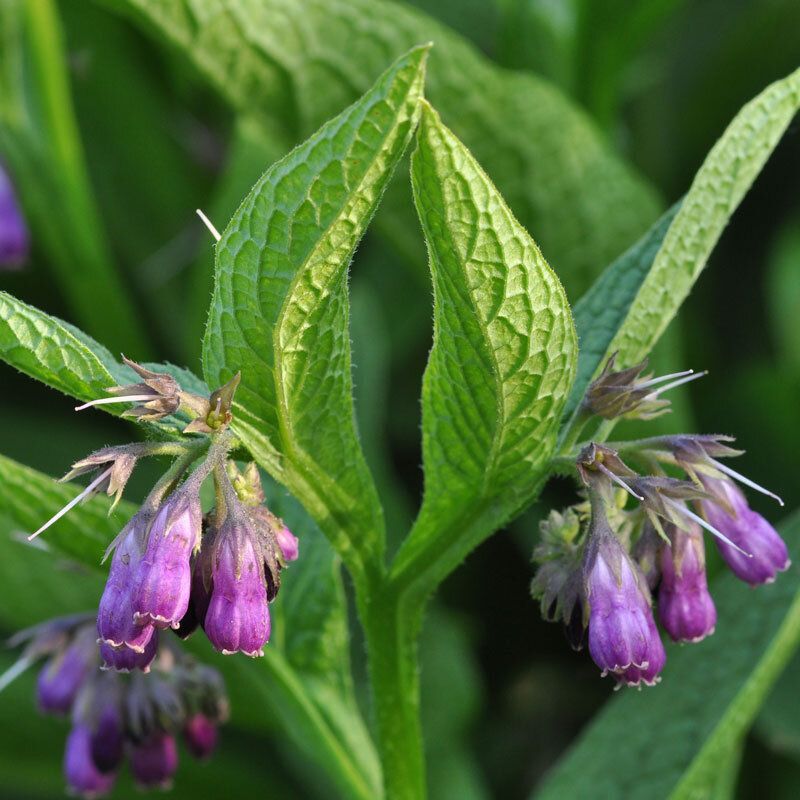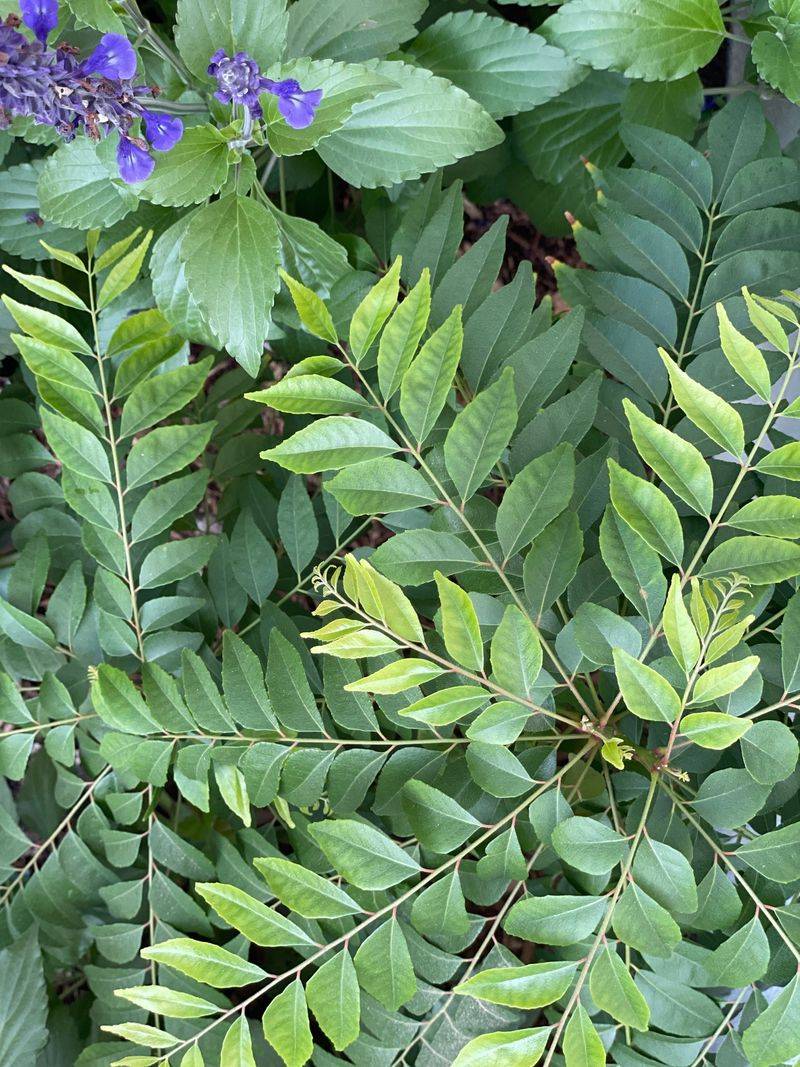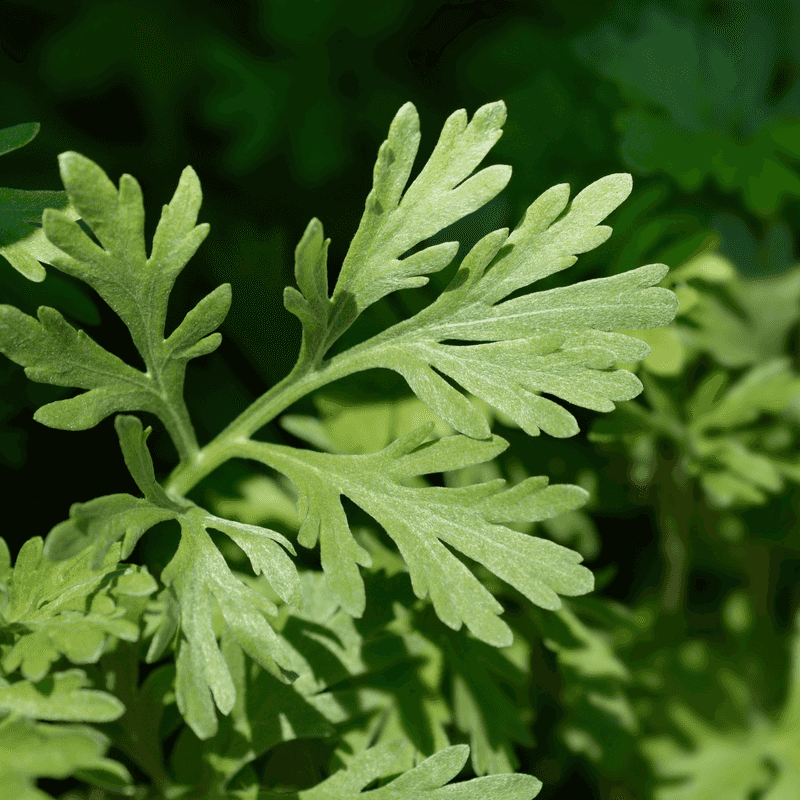Exploring the world of herbs can transform your backyard into a haven of delightful aromas and culinary possibilities. Whether you’re an aspiring chef or simply enjoy the fragrance, growing herbs is a fulfilling endeavor.
This guide introduces you to 33 unique herbs that can thrive in your backyard, each adding its own flavor and charm to your garden.
From the familiar to the exotic, these herbs offer a variety of scents, tastes, and uses that will enhance your gardening experience.
1. Lemon Balm
Lemon Balm, with its citrusy aroma, can brighten any garden. Its glossy, green leaves release a refreshing lemon scent, making it a favorite for teas and desserts.
This perennial herb is not only a culinary delight but also a natural calming agent, often used in aromatherapy. Easy to grow in well-drained soil, it’s perfect for a sunny corner of your backyard.
Did you know? Lemon Balm was historically used to lift spirits and treat wounds. Its cheerful aroma continues to enchant gardeners today.
2. Borage
Borage is a bee magnet, thanks to its striking blue, star-shaped flowers. This annual herb not only attracts pollinators but also adds a cucumber-like flavor to salads and drinks.
Growing borage is straightforward; it thrives in full sun and well-drained soil. Its hairy leaves and stems add texture to the garden landscape.
Historically, borage was believed to bring courage. Today, it’s cherished for its beauty and culinary versatility, offering gardeners the perfect blend of function and form.
3. Lovage
Lovage, with its tall, celery-like stalks, makes a bold statement in any herb garden. Its leaves, seeds, and roots are all edible, offering a rich, savory flavor akin to celery or parsley.
This perennial herb thrives in well-drained soil and full sun, reaching impressive heights that can provide a natural backdrop in your garden.
A fun fact: Lovage was commonly used in medieval cooking and medicine, valued for its versatility and robust flavor. It’s a go-to for soups and stocks today.
4. Sorrel
Sorrel, with its tangy, lemony leaves, adds a burst of zing to any dish. This perennial herb is a culinary favorite, particularly in soups and sauces.
Easy to grow, sorrel thrives in moist, well-drained soil and can tolerate partial shade, making it a versatile choice for various garden spots.
In ancient times, sorrel was used to treat scurvy due to its high vitamin C content. Its sharp flavor continues to invigorate taste buds worldwide.
5. Catnip
Catnip is a hit with feline friends, but it’s more than just a toy for cats. This hardy herb, with its soft, fuzzy leaves, also finds its place in herbal teas and natural insect repellents.
It grows well in full sun and well-drained soil, making it an easy addition to your backyard herb collection. Plus, its small white flowers add a delicate touch to your garden.
Interestingly, catnip was used in traditional medicine to relieve headaches and insomnia, showcasing its multifaceted appeal.
6. Anise Hyssop
Anise Hyssop captivates with its fragrant, licorice-scented leaves and striking purple flower spikes. This perennial herb is both ornamental and useful in teas and desserts.
It flourishes in full sun and well-drained soil, attracting bees and butterflies, which makes it a pollinator’s dream. Its vibrant flowers create a stunning visual effect in any garden.
A quirky tidbit: Native Americans once used Anise Hyssop to treat coughs and colds, underscoring its historical significance and enduring appeal.
7. Purple Basil
Purple Basil is a striking twist on a kitchen staple, boasting deep violet leaves that stand out in any garden. Its sweet, slightly spicy flavor is perfect for adding color and taste to salads and dishes.
This annual herb loves full sun and fertile, well-drained soil. Its vibrant foliage not only pleases the eye but also the palate, making it a must-have.
Did you know? Purple Basil is rich in anthocyanins, the same antioxidants found in blueberries, offering health benefits alongside its culinary uses.
8. Fennel
Fennel offers a feast for both the eyes and taste buds. Its feathery leaves and bulbous base provide a sweet, anise-like flavor, ideal for culinary adventures.
Thriving in full sun and well-drained soil, fennel not only enhances dishes but also serves as a host plant for swallowtail butterflies.
Historically, fennel symbolized longevity and courage in ancient Rome. Today, it continues to be a garden favorite for its versatility and charm, promising a touch of elegance.
9. Salad Burnet
Salad Burnet brings a unique twist to your garden with its cucumber-flavored leaves. This perennial herb is perfect for adding a refreshing note to salads and cold dishes.
Growing well in full sun or partial shade, Salad Burnet is forgiving and low-maintenance. Its serrated leaves add an interesting texture to your garden array.
Fun fact: Salad Burnet was popular in medieval times, believed to enhance vitality. Its distinct flavor and rustic charm keep it relevant for modern gardeners.
10. Sweet Cicely
Sweet Cicely is a gardener’s delight with its fern-like leaves and sweet, anise flavor. This perennial herb is often used to sweeten tart fruits and desserts naturally.
It prefers moist, well-drained soil and can thrive in partial shade, making it versatile for different garden settings.
Did you know? Sweet Cicely has been used in traditional medicine to aid digestion. Its enchanting aroma and graceful appearance make it a charming addition to any backyard.
11. Winter Savory
Winter Savory is a robust herb with dark green leaves and a spicy, peppery flavor. Perfect for hearty winter dishes, it stands out as both a culinary and ornamental plant.
This perennial loves well-drained soil and full sun, making it a resilient choice for any garden. Its small white flowers add a delicate touch.
Historically, Winter Savory was used as a digestive aid. Its bold flavor and hardy nature continue to make it a favorite among herb enthusiasts today.
12. Chervil
Chervil, with its delicate, fern-like leaves, offers a mild anise flavor, perfect for seasoning light dishes and salads. This annual herb is a staple in French cuisine, adding a hint of elegance.
Thriving in partial shade and well-drained soil, Chervil is relatively easy to grow, making it a must-have for any herb garden.
Fun fact: Chervil was once used by the Romans as a spring tonic. Its subtle flavor and graceful appearance continue to win hearts in kitchens worldwide.
13. Hyssop
Hyssop, known for its vibrant blue flowers, is a showstopper in any herb garden. Its slightly bitter, minty flavor makes it a distinctive addition to savory dishes and teas.
This perennial herb thrives in full sun and well-drained soil, and its aromatic blooms attract pollinators, enhancing garden biodiversity.
Historically, Hyssop was used for purification rituals. Its bold flavor and striking appearance ensure it remains a beloved choice for herb enthusiasts today.
14. Angelica
Angelica stands tall with its majestic, umbrella-shaped flower clusters. This biennial herb offers a sweet, musky flavor, perfect for candies and liqueurs.
Thriving in moist, well-drained soil and partial shade, Angelica can be an eye-catching addition to any garden. Its towering presence creates a natural focal point.
Did you know? Angelica was believed to ward off evil spirits in medieval folklore. Its unique flavor and striking stature continue to captivate gardeners.
15. Lemon Verbena
Lemon Verbena, with its fresh, lemony fragrance, is a must-have for herb lovers. Its long, pointed green leaves infuse a delightful citrus aroma, ideal for teas and desserts.
This deciduous shrub thrives in full sun and well-drained soil, and its aromatic foliage can be a sensory delight in your garden.
Fun fact: Lemon Verbena was prized in Victorian gardens for its scent. Its refreshing aroma and versatility ensure its enduring popularity among gardeners.
16. Tansy
Tansy boasts bright yellow, button-like flowers that bring a pop of color to your garden. This perennial herb’s fragrant leaves are often used in potpourri and natural insect repellents.
Growing well in full sun and well-drained soil, Tansy is a hardy addition to any herb garden. Its vibrant blooms can attract beneficial insects.
Historically, Tansy was used in religious ceremonies and as a natural preservative. Its bold appearance and aromatic qualities make it a captivating choice for gardeners.
17. Culantro
Culantro, not to be confused with cilantro, offers a bold, pungent flavor that’s indispensable in Caribbean and Asian cuisines. Its broad, serrated leaves pack a punch in both aroma and taste.
This tropical biennial herb thrives in partial shade and moist, well-drained soil, making it a unique addition to your herb collection.
Did you know? Culantro is often used in traditional medicine for its anti-inflammatory properties. Its robust flavor and cultural significance make it a standout herb for culinary adventurers.
18. Vietnamese Coriander
Vietnamese Coriander, with its peppery, citrusy flavor, is a staple in Southeast Asian cuisine. Its slender, pointed leaves add a distinctive taste to salads and soups.
Thriving in warm, humid conditions with partial shade, this tropical herb can bring a touch of exotic flair to your backyard.
A quirky tidbit: Vietnamese Coriander is often used in Nyonya cuisine, known for its rich, spicy flavors. Its unique taste and culinary heritage make it a must-try for adventurous gardeners.
19. Perilla
Perilla, also known as shiso, offers a delightful burst of flavor with its green and purple leaves. This annual herb is a culinary gem in Japanese and Korean dishes, adding a tangy, minty kick.
It grows best in full sun and moist, well-drained soil, allowing its vibrant foliage to flourish beautifully in your garden.
Fun fact: Perilla leaves are used to wrap sushi in Japan, adding both flavor and visual appeal. Its unique taste and cultural significance make it a treasured herb for culinary explorers.
20. Skullcap
Skullcap, with its delicate purple flowers, is a charming addition to any herb garden. This perennial herb is not only ornamental but also a staple in herbal medicine, used to promote relaxation.
Thriving in moist, well-drained soil and partial shade, Skullcap offers both beauty and utility, attracting pollinators with its vibrant blooms.
Did you know? Skullcap was traditionally used by Native Americans for ceremonial purposes. Its calming properties and striking flowers continue to enchant gardeners worldwide.
21. Rue
Rue, with its feathery blue-green leaves, stands out for its unique appearance and historical significance. This perennial herb has a bitter taste, often used sparingly in culinary creations.
Growing well in full sun and well-drained soil, Rue can add a distinct touch to any herb garden. Its foliage provides a soft contrast to other plants.
Historically, Rue was believed to ward off witches and evil spirits. Its intriguing history and unusual flavor make it a fascinating choice for herb enthusiasts.
22. Savory
Savory, with its peppery tang, enhances a variety of dishes, from beans to meats. This annual or perennial herb is a versatile addition to any culinary garden, offering robust flavor.
It thrives in full sun and well-drained soil, with its small white flowers adding a touch of elegance to your backyard.
Did you know? Savory has a rich history, once used by the Romans to flavor their dishes. Its bold taste and culinary versatility continue to win over chefs and gardeners alike.
23. Woodruff
Woodruff, with its sweet, hay-like scent, is a delightful herb for shaded gardens. Its delicate white flowers and whorled green leaves create a carpet of charm.
This perennial thrives in moist, well-drained soil and partial to full shade, making it ideal for woodland gardens or shaded areas.
Fun fact: Woodruff is traditionally used to flavor May wine in Germany. Its enchanting aroma and lush appearance make it a lovely choice for creative gardeners.
24. Nasturtium
Nasturtium, with its vibrant orange flowers, brings a splash of color to any garden. Its peppery leaves and blossoms are edible, adding a zesty kick to salads and garnishes.
This annual thrives in full sun and well-drained soil, requiring minimal care while offering maximum visual impact.
Did you know? Nasturtium was once used by the Incas as a medicinal plant. Its stunning appearance and flavorful leaves make it a popular choice for ornamental and edible gardens alike.
25. Betony
Betony, with its spikes of purple flowers, is a captivating addition to any herb garden. This perennial herb is not only ornamental but also valued in traditional herbal medicine for its calming properties.
Thriving in full sun and well-drained soil, Betony’s vibrant blooms can attract pollinators, enhancing your garden’s biodiversity.
Historically, Betony was believed to protect against evil spirits. Its charming blooms and historical significance make it a cherished herb for garden enthusiasts.
26. Burnet
Burnet, often overshadowed by its more famous relatives, deserves its place in any herb garden. Its serrated leaves bring a refreshing, cucumber-like flavor to salads and drinks.
Growing best in full sun and well-drained soil, Burnet is both undemanding and rewarding, offering a unique taste that complements a variety of dishes.
Fun fact: Burnet has been used since Roman times for its culinary and medicinal properties. Its crisp flavor and historical charm make it a delightful addition to herb collections.
27. Saffron Crocus
Saffron Crocus offers a touch of luxury with its vibrant purple flowers and precious red stigmas. This autumn-blooming bulb is treasured for producing saffron, the world’s most expensive spice.
Thriving in full sun and well-drained soil, it requires some patience but rewards gardeners with both beauty and culinary gold.
Did you know? Saffron Crocus has been cultivated for thousands of years for its culinary and dyeing properties. Its beauty and opulence make it a standout choice for adventurous gardeners.
28. Good King Henry
Good King Henry, with its broad green leaves, is a hardy perennial that offers a spinach-like taste. This herbaceous plant is not only a culinary delight but also a piece of garden history.
It thrives in well-drained soil and partial shade, making it suitable for a variety of garden settings. Its leaves and shoots are both edible, providing versatility in the kitchen.
Historically, Good King Henry was a staple in medieval gardens. Its robust nature and historical roots make it a fascinating choice for herb enthusiasts.
29. Mugwort
Mugwort, with its silvery-green leaves, offers a touch of enchantment to any garden. This perennial herb is known for its aromatic qualities and use in herbal medicine.
Growing well in full sun and well-drained soil, Mugwort can add an ethereal presence to your herb collection with its feathery foliage.
Did you know? Mugwort was once used as a protective herb by travelers in ancient times. Its mystical aura and practical uses continue to inspire gardeners today.
30. Mexican Tarragon
Mexican Tarragon, with its anise-like flavor, is a delightful alternative to true tarragon. Its glossy green leaves and cheerful yellow flowers make it a visual treat.
This annual or tender perennial thrives in full sun and well-drained soil, offering a splash of color and flavor to your garden.
Fun fact: Mexican Tarragon is often used in Day of the Dead celebrations in Mexico. Its unique taste and cultural connections make it an exciting choice for herb enthusiasts.
31. Comfrey
Comfrey, with its large, hairy leaves and purple flowers, is a powerhouse in any garden. This perennial herb is valued for its medicinal properties, particularly for healing wounds.
It grows best in full sun or partial shade with moist, well-drained soil. Comfrey’s robust growth and nutrient-rich leaves make it a popular choice for organic gardening.
Historically, Comfrey was known as “knitbone” for its healing qualities. Its utility and lush growth make it a cherished addition for gardeners seeking both beauty and function.
32. Curry Leaf
Curry Leaf, with its glossy green leaves, is a staple in South Asian cooking, imparting a distinct, aromatic flavor. This small tree or shrub is as charming as it is useful.
Thriving in full sun and well-drained soil, Curry Leaf can add a tropical touch to your backyard, making it both a culinary and visual delight.
Did you know? Curry Leaves are often used in Ayurvedic medicine for their health benefits. Their unique aroma and culinary importance make them an essential herb for adventurous cooks.
33. Wormwood
Wormwood, with its silvery foliage, brings an air of mystery to any garden. This perennial herb is known for its use in absinthe and herbal remedies.
Growing best in full sun and well-drained soil, Wormwood provides an intriguing visual contrast with its feathery leaves and unique scent.
Historically, Wormwood was used in ancient Egypt for medicinal purposes. Its intriguing history and striking appearance make it a fascinating choice for herb gardens.
